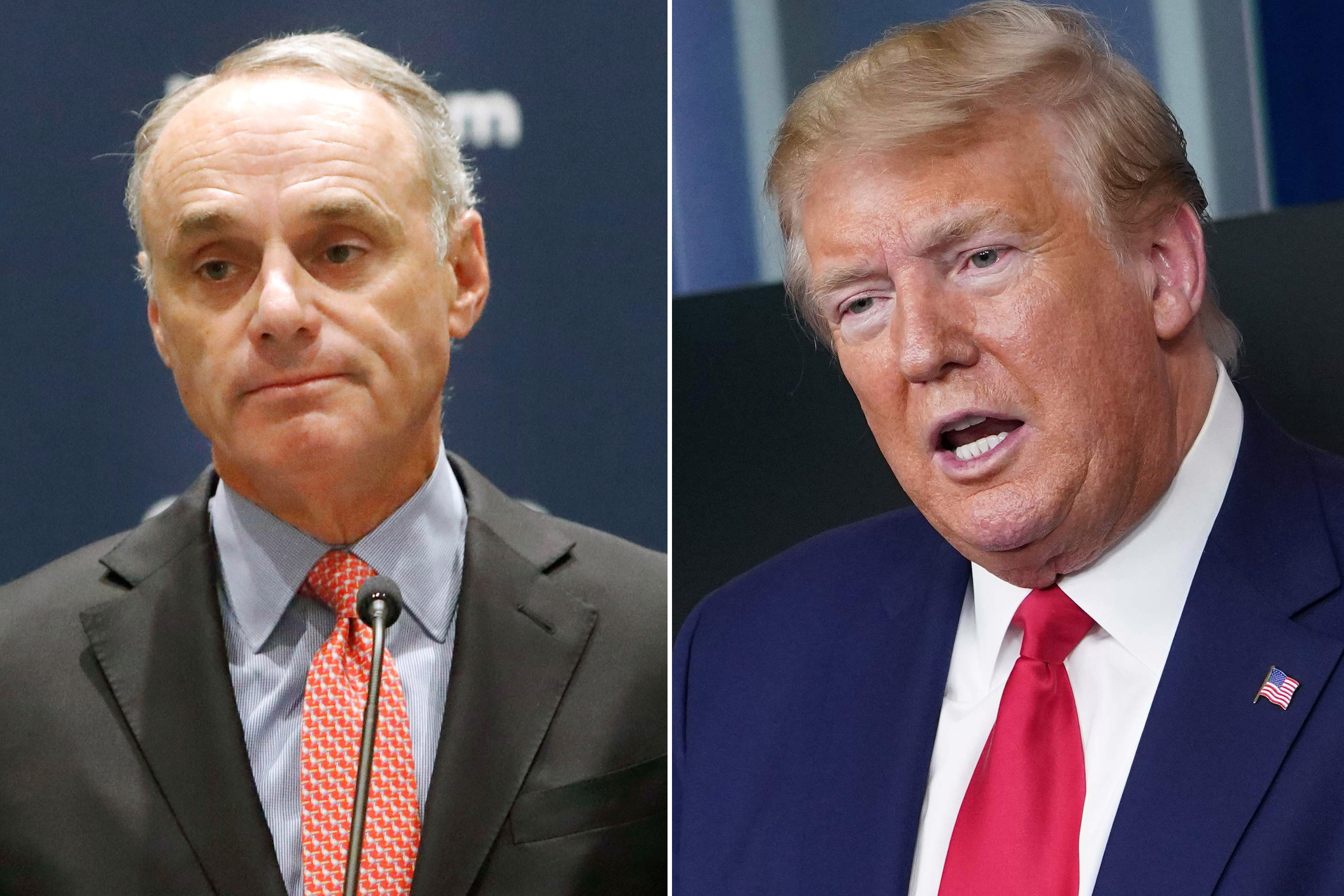More On: Coronavirus
Joe Biden Tests Positive for Wuhan Coronavirus Again
Aaron Rodgers, Green Bay Packers Fined for Violating COVID-19 Protocols
Shailene Woodley Defends Aaron Amid Rumored COVID-19 Quarantine Outings
Howard Stern: Aaron Rodgers Should Be Fired for 'Bulls--t' Vaccine Comments
Emilio Estevez Denies Being Anti-Vax After Exiting 'Mighty Ducks' Series
The economic element is powerful. Of course, MLB owners and players want to return to play because that is the way both are paid. But the sport also is receiving insights and advice from important federal officials and national health organizations suggesting a return to the field could provide a) confidence to the country that …
The economic element is powerful. Of course, MLB owners and players want to return to play because that is the way both are paid.
But the sport also is receiving insights and advice from important federal officials and national health organizations suggesting a return to the field could provide a) confidence to the country that businesses will emerge slowly from the clutches of the coronavirus pandemic and b) that a modified version of baseball played with greater distancing and no crowds will offer instruction to the nation that businesses will reopen but will need different practices than used previously to do so.
A plan to have all the teams play in Arizona, without fans and while creating as tight a bubble of isolation as possible has gained the most traction.
Yet, all of those involved in formation, potential implication and need for ratification of such a proposal are quick to mention a massive gulf exists between brainstorming on what is feasible and actually executing a plan considering all the risks and hurdles. MLB has yet to submit a plan for approval nor has it received a formal green light from any government or health entity on a variety of scenarios that they have mulled over.
However, what has created energy for the Arizona Project is that behind the scenes it has received support from key government and national medical officials, who see — among other things — the symbolic value baseball could have for the country.

The recognition is that American businesses will reopen slowly and not in the same form in many occupations as before. Without a vaccine — which is still viewed as at least a year away — businesses almost certainly will have to apply new sanitary and distancing practices. And there is an opportunity here for baseball to play an important national role in showing how that can happen as players, for example, might be asked to eliminate high fives and sit in empty stands apart from each other rather than bunched in a dugout.
Without a vaccine, MLB and its medical/scientific advisors are strategizing about just how much risk can be minimized with disciplined practices. MLB is hearing more frequently that testing will soon be more readily available and that regular testing of players and limiting their exposure outside of the bubble created in Arizona might provide an avenue to restart spring training as early as May. Just how big that bubble is with players, front offices, support staff and potentially families is a huge sticking point in trying to work through this plan. The more people equals a wider circle of contact and greater risk for infection and spreading of the virus.
Over the weekend, President Trump spoke to the commissioners of the major sports leagues, including MLB’s Rob Manfred, and noted that a return to play would provide benefits to the country beyond the games.
MLB sees the potential to improve its image and be a leader if it can be the first sports league playing and doing it safely. And, yes, there is a chance, especially if MLB is first among sports leagues, to recoup some lost money from the ongoing absence of games. There is the potential to televise games all day to a country still largely on lockdown and craving live sports. But there are many hurdles to clear and many approvals to receive.
Obviously, the Players Association would have to ratify such a plan and there will be questions if some players will not return without a vaccine. That is why there is talk of having 30 or 40 or even 50 players consistently training with the team and available to deal with injury, reduced preparation time especially for pitchers and the absence of a minor league feeder system.
Beyond the players there will be questions how large to make a support staff and the safety of those helping to put on games, including hotel staff, food services, ground crews and bus drivers. There is a particular focus on older coaches and umpires, especially any with pre-existing medical conditions that would make them more susceptible to the virus. It is one reason that talk of speeding up the electronically called strike zone has been mentioned — though major league officials have cautioned that the technology might not be ready for major league action.
MLB knows that amid the pandemic there are no perfect plans and that even the Arizona concept might not turn out to be feasible. But more and more it has come to the belief that if there is to be a season of any length this year the probability is that it will not be played broadly across the nation, it will not have crowds at least at the outset (if ever) and that it will contain risk at some level. The Arizona plan has gained some traction because, to date, it potentially offers the least risk and the greatest rewards both financially and symbolically.






















